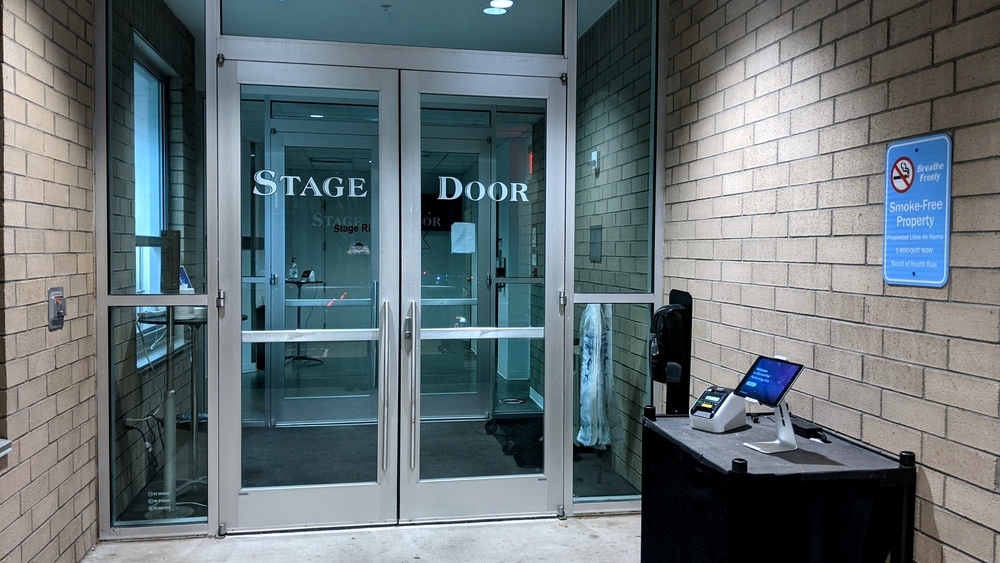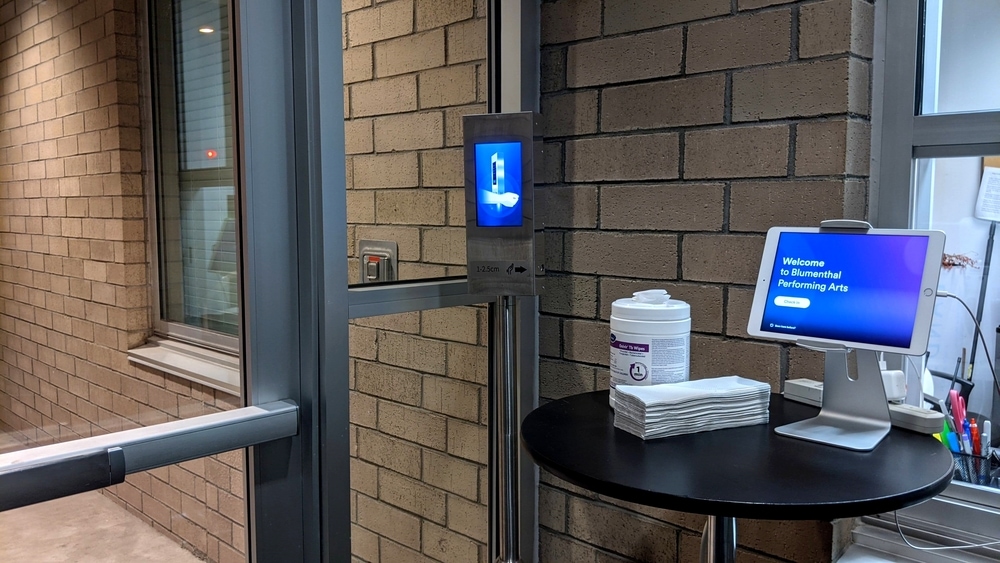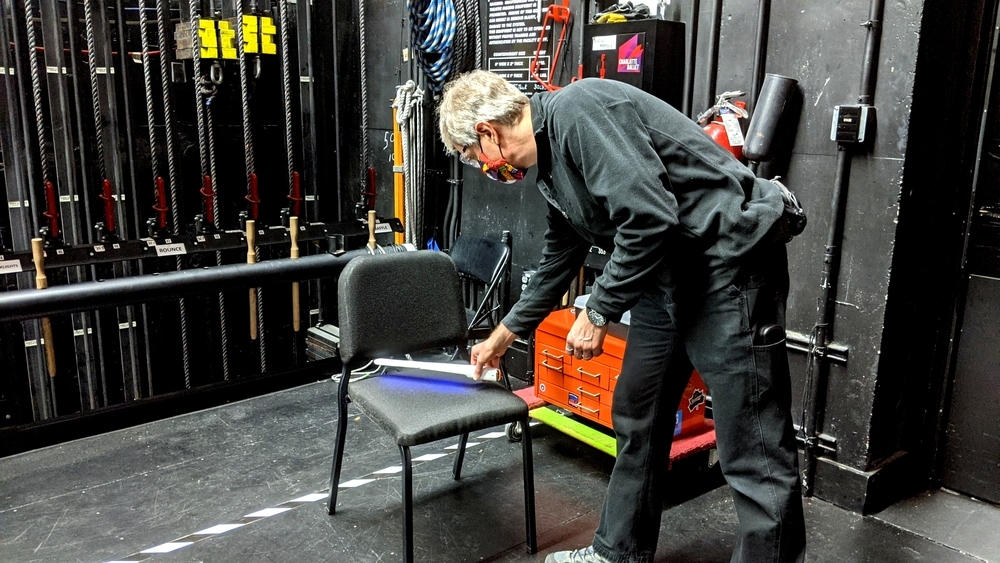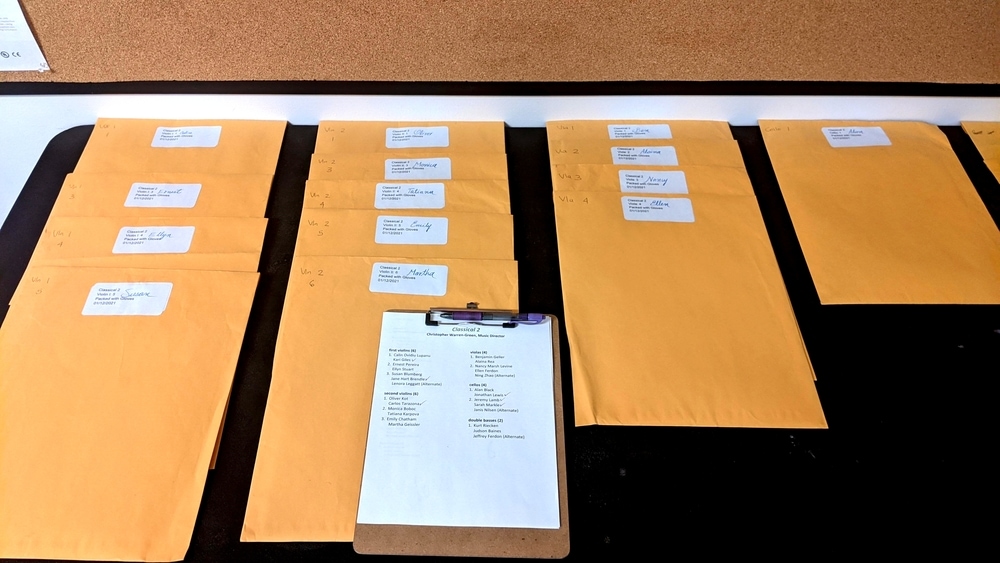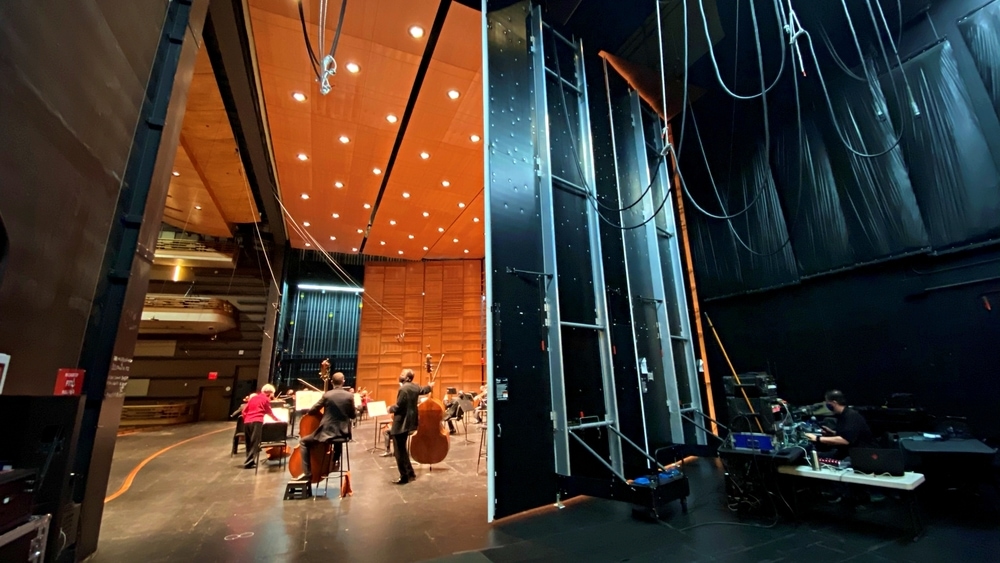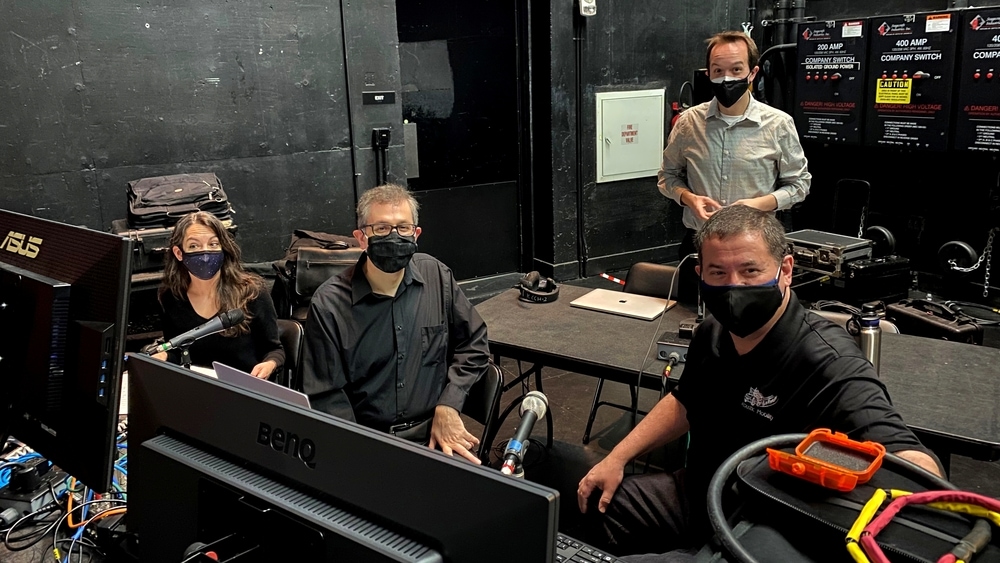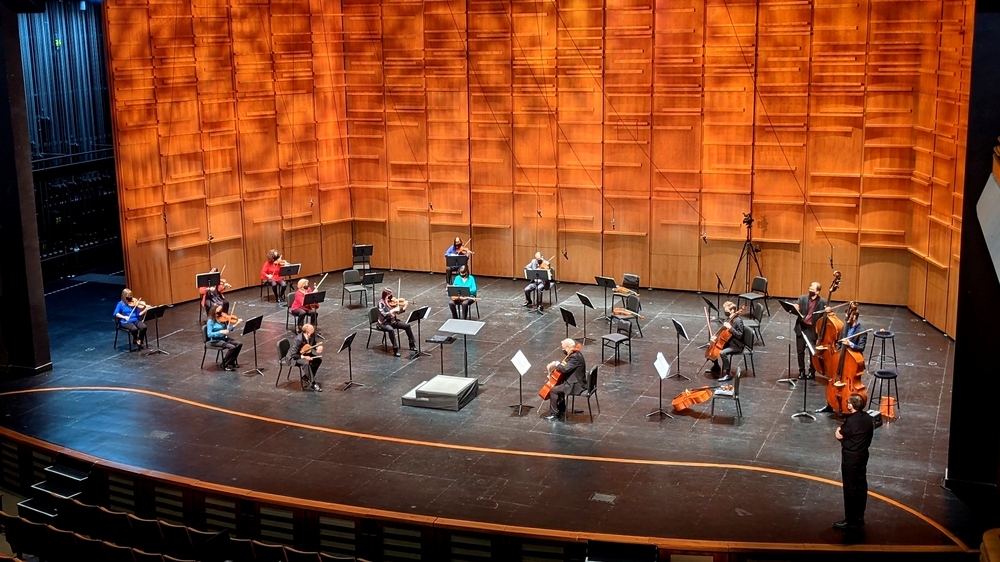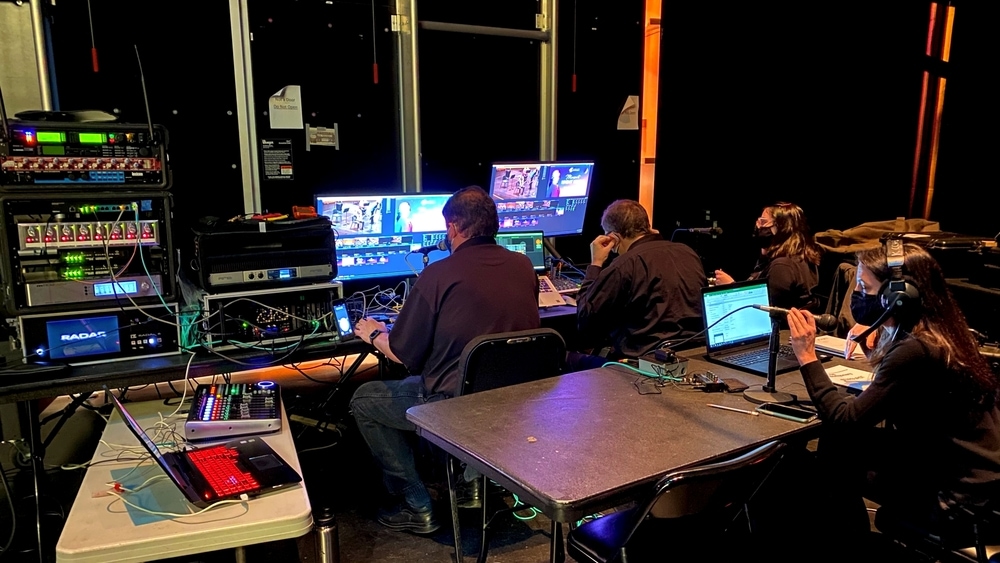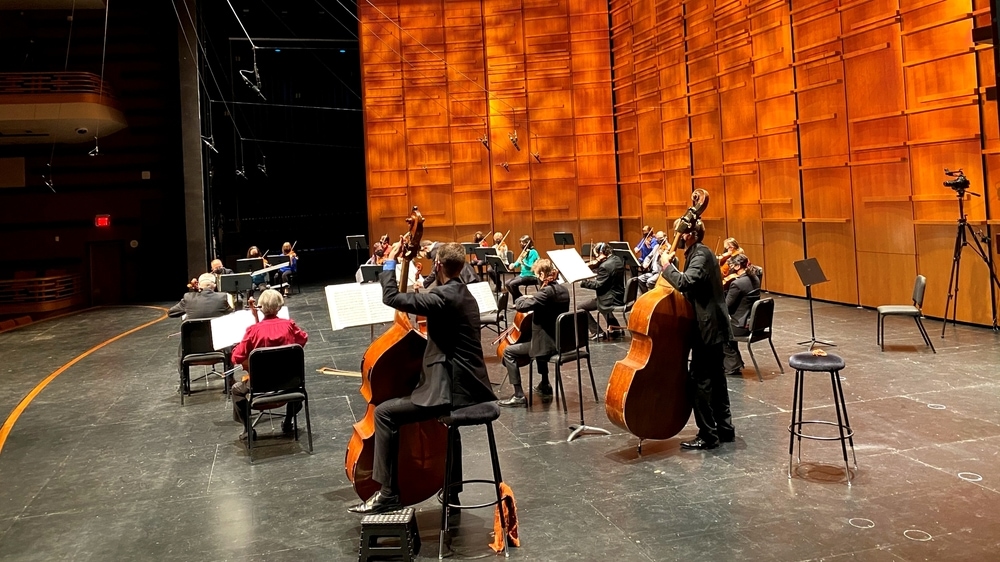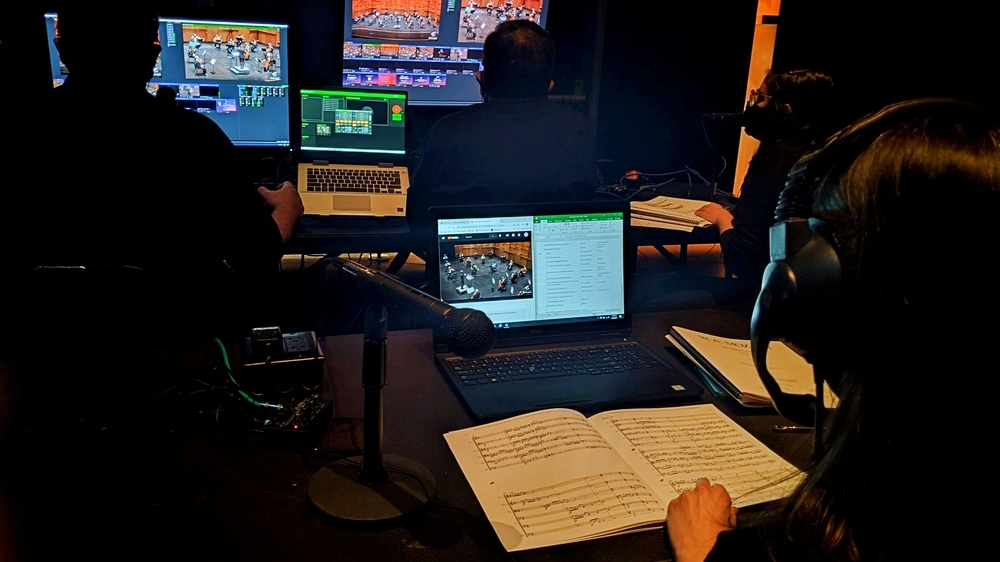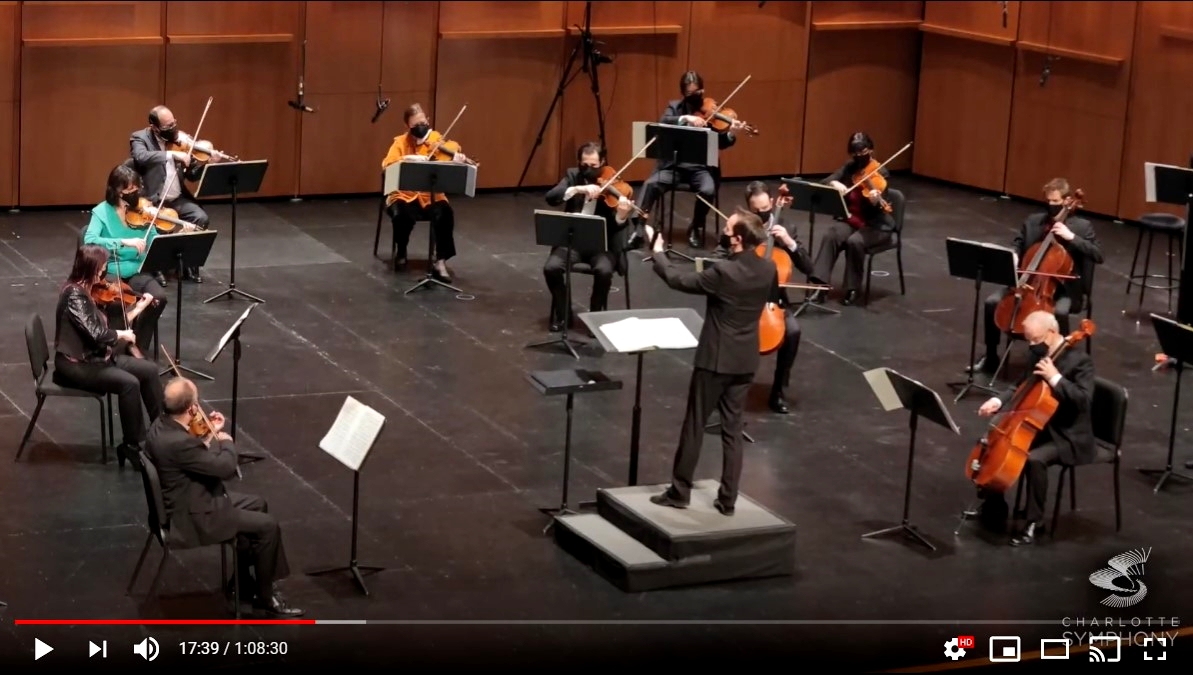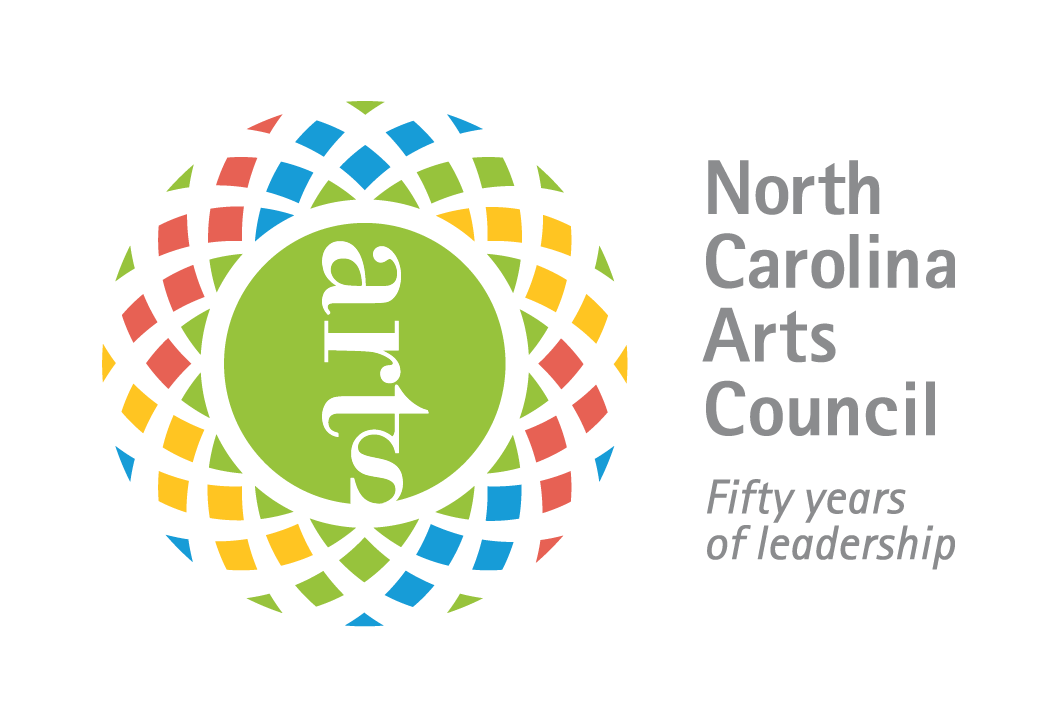Sound of Charlotte Blog
The Mahler Journey
January 5, 2022
This month, Music Director Christopher Warren-Green and the Charlotte Symphony complete their journey through Mahler's Symphonies with his final completed work, the powerful and introspective Symphony No. 9.
Gustav Mahler is, undoubtedly, one of the most important and influential composers throughout history. His towering symphonies contain multitudes the very essence of the human condition love, hatred, life, and death. It's easy for people to hear echoes of their own fears, joys, doubts, and sorrows in his music. It's universal.
Despite this, decades after his death, Mahler's music was overshadowed by the modernist sounds of the second Viennese school - Schoenberg, Berg, and Webern - and his longer-living contemporary Richard Strauss. It wasn't until the 1960s that conductors, most notably Leonard Bernstein, began to rediscover and champion his works; demystifying the genius to be found within these complex and massive symphonies."A Symphony must be like the world. It must contain everything" ~ Mahler

And this is precisely what Christopher Warren-Green set out to do when, early in his tenure as Music Director, he invited Charlotte to join him and the Orchestra on a journey through Mahler's most epic Symphonies.
"By now, everyone knows that Mahler is one of my absolute favorite composers," said Music Director Christopher Warren-Green, "not only because of the pure majesty and grandeur of his compositions but because of their complexities."
Now, in the final leg of the Mahler Journey, Maestro Warren-Green hopes all of Charlotte will join him in experiencing Mahler's greatness through the Ninth Symphony. "If you've ever heard Mahler's music, you'll know what I mean, especially if you've heard it live, there is simply nothing like hearing it in person in the concert hall."

Mahler was consumed with thoughts of his own and others' mortality as he composed his Ninth Symphony, following the death of his four-year-old daughter and the diagnosis of a heart condition that would take his life just four years later. But if despair and anguish are undoubtedly present in the music, they stand side-by-side with a passionate love of life and nature, and a heroic defiance of death.
"You've trusted me along this Mahler Journey thus far," said Maestro Warren-Green, "and I truly do hope you'll join us for the final part. You'll be in for a real treat."
The Curse of the Ninth
Mahler went out of his way to avoid a Ninth Symphony as neither Beethoven nor Bruckner had managed to reach a Tenth. At first he titled Das Lied von der Erde as the Ninth, but crossed the number out. As he wrote his next symphony, which he called the Ninth, he said to his wife, "Of course, it's actually the Tenth, because Das Lied von der Erde was really the Ninth...the danger is past." Despite his efforts, Mahler died before he could see the Ninth Symphony performed. Read moreWelcome Back to the Symphony!
April 8, 2021
It's been over a year since the Charlotte Symphony has had an audience in the hall during a performance, but that will finally change this month when the CSO welcomes back a limited number of subscribers into the Belk Theater for a performance of Mozart's Violin Concerto No. 3, featuring violinist Simone Porter, and Respighi's Ancient Airs and Dances.
In-person seats will be limited, but if you weren't able to snag a ticket, fear not! The CSO will bring audiences back on May 14 and 15 for a special concert featuring Grammy-Award winning saxophonist Branford Marsalis performing Ibert's Concertino da camera and Schulhoff's jazz-inspired Hot-Sonate. The program will also include Bartok's Romanian Folk Dances and Gershwin's Lullaby.
The concerts in May, conducted by Music Director Christopher Warren-Green, will feel like a homecoming for musicians and audience alike. "These performances are going to be very emotional for all of us, said Maestro Warren-Green. "For the past 13 months, we've been connecting with our audiences through virtual concerts and in small groups, but I cannot wait to safely reconnect with our CSO family in person."

Streaming concerts have made it possible to continue performing throughout the pandemic, but it just cannot replace the unique experience of sharing in a live orchestral concert. Maestro Warren-Green agrees, "to feel the energy of an audience from the podium again I've missed it so much!"
Spotlight: Branford Marsalis
April 8, 2021
Branford Marsalis hails from the musically rich and diverse city of New Orleans and was raised in a house of jazz royalty - his father, Ellis, was one of New Orleans' most esteemed pianists and music educators, and he's the oldest among jazz siblings Wynton, Delfeayo, and Jason Marsalis. The New York Times described the Marsalis family as "jazz's most storied living dynasty."
Marsalis has performed with countless jazz legends, formed his own quartet in 1986, and is the winner of three Grammy awards, but his musical interests are not confined to jazz, he is also an accomplished and dedicated performer of classical music and has made a name for himself as a soloist in the orchestral world.
Though he bridges these two musical worlds, his approach is different when playing classical music, "I have to be less loud," Marsalis said in a 2019 interview for artsfile. "I need to have a mouthpiece that allows me to control the tone. Non-classical music never really gets to pianissimo. It never gets softer than super loud. To get that you have to practice in a different way. I played clarinet first. My clarinet teacher was always on me about my tone."
When asked which genre was more difficult, Marsalis didn't hesitate, "Classical is harder. Jazz is like a story that you personalize, but classical is a story where you can't use your own words. It's like reading Shakespeare or Chaucer. You have to develop the characters to make them believable, but the words aren't yours, and you're not going to change Shakespeare. You can't. In classical music, you don't play your own notes, you play theirs."
Branford Marsalis performs the first movement of Ibert's Concertino da Camera.
Reflecting on the growth of his classical music career, Marsalis said "Classical music in my 40s got me to a place where I was going to have to practice and become a better player. It made me a better musician."
Branford Marsalis will join Christopher Warren-Green and your Charlotte Symphony at the Belk Theater on May 14 & 15 to perform Ibert's lyrical and soaring Concertino da camera and Schulhoff's jazz-inspired Hot Sonate. >> Get Tickets

A Composer to Know: Jessica Meyer
March 2, 2021
As a critically acclaimed violist and passionate educator, New York-based artist Jessica Meyer embarked on her composition career only seven years ago. In a recent interview for the record label Bright Shiny Things she explained, "After many, many years of playing new music and helping kids create their own music, I could not ignore the nagging feeling I had that I was not doing what I was supposed to be doing. I started to write for myself, but once I started writing for other people in 2014, the floodgates were opened and I knew that without a doubt that was what was missing from my life."
In her solo performances, Meyer uses a single simple loop pedal to create a virtuosic orchestral experience using her viola and voice. Drawing from wide-ranging influences which include Bach, Brahms, Delta blues, Flamenco, Indian Raga, and Appalachian fiddling, Meyer's music takes audience members on a journey through joy, anxiety, anger, bliss, torment, loneliness, and passion.
Meyer's work Slow Burn had its premiere on March 18, 2018, performed by the string quintet Sybarite5.
It is also a combination of all the groovy music I like to listen to, at the heart of which is a theme that most singers wind up singing about at some point: that unrequited love that was never meant to be.

Hear Jessica Meyer's Slow Burn performed by your Charlotte Symphony streamed from the Knight Theater on Saturday, March 6 at 7:30 p.m. (watch through March 13)
Read more
Behind-the-Scenes at a Virtual Performance
February 19, 2021Take a journey backstage to see what goes into producing your Charlotte Symphony's virtual Classical Series Reimagined. From the musicians and conductors to stagehands and video producers the work of many hands comes together to create the concerts that stream directly to your living room.
There are many more opportunities to experience your Charlotte Symphony from the comfort of your own home. Subscribe today for exclusive content, extended access to each concert, and save 10%. Explore the Classical Series Reimagined! Read more
A Composer to Know: Jessie Montgomery
February 1, 2021
Photo credit: Jiyang Chen
|
A composer, violinist, and educator, Jessie Montgomery's music melds the classical tradition with elements of folk music, spirituals, improvisation, language, and social justice. As a rising star in today's classical music scene Jessie has made a name for herself composing works that have been described as "turbulent, wildly colorful and exploding with life" (The Washington Post). Jessie was born and raised in Manhattan's Lower East Side in the 1980s during a time when the neighborhood was at a major turning point in its history. Artists gravitated to the hotbed of artistic experimentation and community development. |
Her parents - her father a musician, her mother a theater artist and storyteller - were engaged in the activities of the neighborhood and regularly brought Jessie to rallies, performances, and parties where neighbors, activists, and artists gathered to celebrate and support the movements of the time. It is from this unique experience that Jessie has created a life that merges composing, performance, education, and advocacy.
Through her music, Montgomery often explores the theme of what it means to be an American (especially a Black woman in America), her heritage, and what her parents have experienced in this country.
Montgomery's work, Starburst, was commissioned by the Sphinx Organization and premiered by its resident Sphinx Virtuosi in 2012. Montgomery writes:
Hear Jessie Montgomery's Starburst performed by your Charlotte Symphony - streamed live from the Knight Theater on Saturday, Feb. 6 at 7:30 pm (watch through Feb. 13). >> Details
Read more
Time Traveling with A Little Night Music
January 28, 2021
By Resident Conductor Christopher James Lees
Analogies for the art form we know as "classical music" run the full expressive gamut from museum pieces under glass to masterpieces delivered by the Divine through unparalleled genius. While each person develops their own relationship with this timeless music, along my journey I learned that classical music is a "living tradition." As artists, we honor our important history through our repertoire choices and performance practices, while also breathing life into new pieces filled with fresh inspiration. Sometimes the ink is still wet on the page it's so new.
And every so often, the timelines combine. A composer from the current century may look directly into a piece from the past for inspiration. Such is the case with Leonardo Balada's magnificent 2007 work: A Little Night Music in Harlem.
Like so many composers we know, Leonardo Balada left his home to study composition in another country. His journey took him from the Catalan region of Spain to New York City, in 1956.
Perhaps then, as now, there was no more famous a piece than Wolfgang Amadeus Mozart's own Eine Kleine Nachtmusik, which itself translates to "A Little Night Music." One only need hear the opening two bars to immediately connect with its universal representation of all classical music in popular culture.
Combining the energy of Balada's adopted home in New York with the perfect craftsmanship of Mozart, we hear incredible reflections and refractions of both worlds simultaneously. Details of Mozart's genius we might miss during a casual listening become magnified and transformed through Balada's contemporary eye and ear. Other moments take us straight to West 132nd street, with urban grit and energy summoned through the brilliant virtuosity of the Charlotte Symphony strings.
I'm so excited for this upcoming concert because as we play the first two movements of Mozart followed by the Balada, I envision it as Mozart's brilliance and Balada's captivating compositional sounds becoming linked through time, that ephemeral medium all performing artists wield on stage.
It is this unique time traveling experience that keeps our marvelous tradition very much alive - breathing, full of inspiration, and made perpetually new.
Don't miss Mozart Night Music, led by Resident Conductor Christopher James Lees, streaming live on Feb. 6 at 7:30 pm. Read more
Clarinetist Allan Rosenfeld’s Top 10 Orchestral Bass Clarinet Solos
January 13, 2021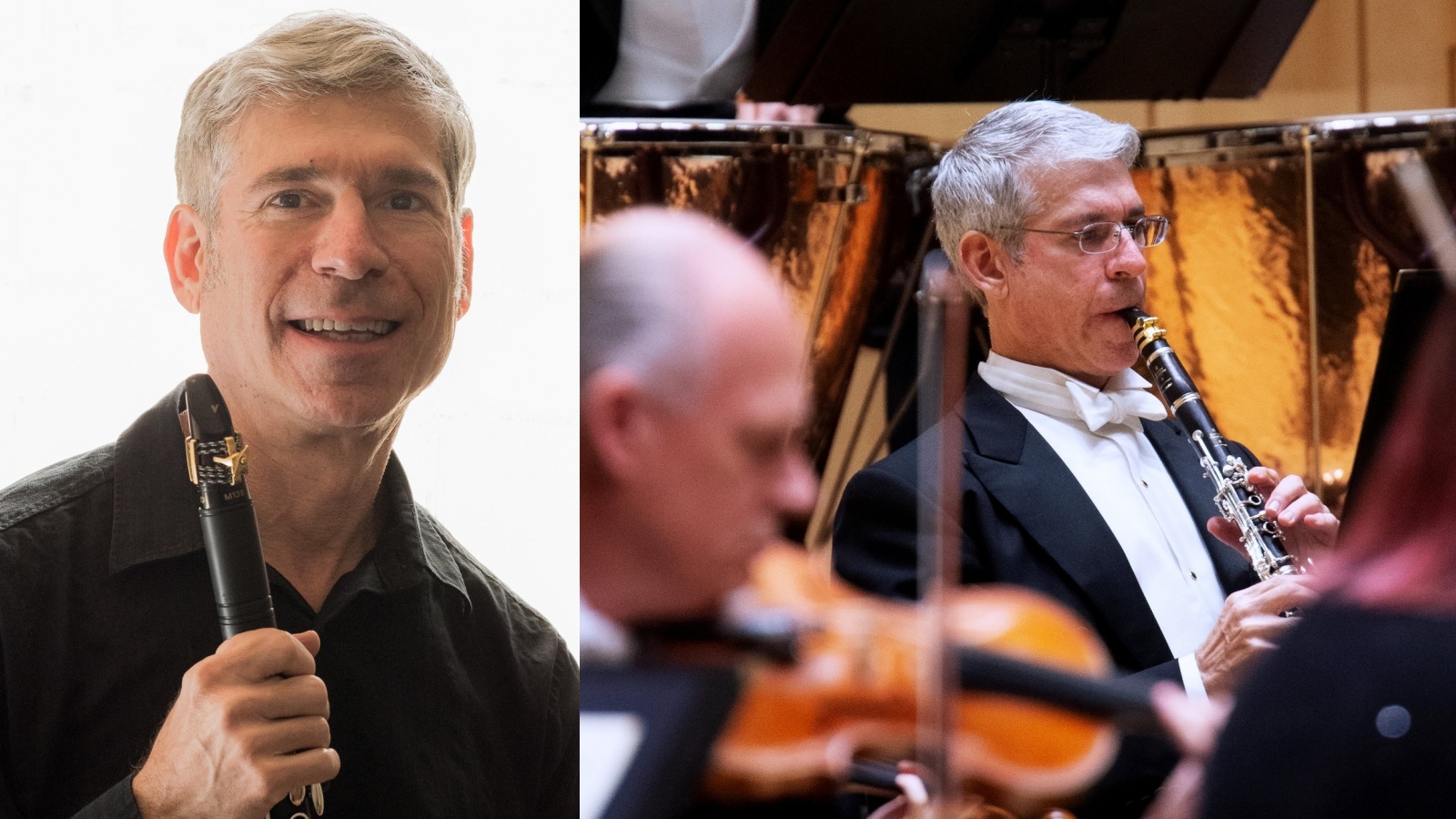
In a previous blog post, I featured a list of my favorite orchestral clarinet solos. While a significant amount of my in the orchestra is spent playing the clarinet, there are many occasions when you can also catch me at CSO concerts performing on the bass clarinet. The bass clarinet is often featured for its ability to fortify and color the woodwind section. Nevertheless, there are some spectacular passages that spotlight the appeal of this magnificent instrument as a solo instrument in its own right.
Here are my Top 10 Orchestral Bass Clarinet Solos:
10) William Schuman's Symphony No. 3 (Part II, Toccata)
9) Gershwin's Concerto in F (Second movement)
8) Tchaikovsky's The Nutcracker (Dance of the Sugar Plum Fairy, middle of Pas de Deux)
7) Shostakovich's Symphony No. 8 (Fifth movement)
6) Wagner's Tristan und Isolde (Act II, scene 3)
5) Wagner's Die Walkure (Act II, scene 2; Act III, scene 3)
4) Stravinsky's Rite of Spring (Opening)
3) Tchaikovsky's Manfred Symphony (First movement)
2) Mahler's Symphony No. 6 (First movement)
1) Khachaturian's Piano Concerto
The Classical Series: Reimagined
January 6, 2021
Your Charlotte Symphony's virtual concerts have already been viewed by thousands of people and received widespread acclaim, with a critic from Classical Voice North Carolina observing that, "the Charlotte Symphony's [virtual concert series] demonstrates the persistence and resilience of the arts and artists and the organization's commitment to its musicians, as well as its listening community."
We're reimagining what it means to serve as your orchestra during the pandemic, and it's been thrilling to find new and innovative ways to bring the music directly to you and your families.
But we're just getting started! The New Year brings four new virtual concerts.
Highlights include:
- The return of Music Director Christopher Warren-Green conducting works by Elgar, Holst, Mozart, and more.
- The continuation of our celebration of Beethoven 250 with performances of his First and Seventh Symphonies.
- Concertmaster Calin Ovidiu Lupanu and Principal Trumpet Alex Wilborn take center stage for concerti by Mendelssohn and Hummel, respectively.
- Contemporary works by Jessie Montgomery and Leonardo Balada, led by Resident Conductor Christopher James Lees.
We're Here to Help
We want you to make sure that everything is working for you once you're settled in to watch our concerts. Please check out this blog post for information on how to access the CSO's virtual concerts. We also have step-by-step instructions for how to stream the concert from a variety of devices, including your computer, phone, or smart TV.If you would prefer to speak to someone, please contact Patron Services at 704.972.2000 or ticketoffice@charlottesymphony.org.
Read more
Clarinetist Allan Rosenfeld’s Top 10 Orchestral Clarinet Solos
November 19, 2020
By CSO Clarinetist Allan Rosenfeld
As a 34-year veteran of the CSO, I am often asked what music I particularly like. With that in mind, I've devised a list of my top ten favorite orchestral clarinet solos. Come listen to the orchestra in our performances and you will hear many more examples of great musical passages featuring the clarinet!
10) Respighi: Pines of Rome (end of Pines of the Janiculum)
Respighi effectively highlights the tremendous ppp (pianississimo, or "very very quiet") capabilities of the instrument. As the clarinet sound floats away, a recording of a nightingale can be faintly heard.
9) Tchaikovsky: Francesca da Rimini
I love Tchaikovsky for his truly memorable melodies. This one especially shows off the expressive qualities of the instrument.
8) Brahms: Symphony No. 3 (opening of second movement)
Gorgeous! You can hear in this solo with woodwind chorale that Brahms had a particular fondness for the sound of the clarinet, and he knew just how to make it sing.
7) Puccini: Tosca (Act III, "E Lucevan le Stelle")
One of the greatest clarinet solos in opera literature, from one of the most readily recognizable Italian arias.
6) Gershwin: Rhapsody in Blue (beginning)
Anyone who has ever seen Woody Allen's film "Manhattan" knows there's no way I could leave this showstopper off the list.
5) Bartok: The Miraculous Mandarin Suite
There are three big clarinet solos spread throughout this suite. And they are big: erotic, wild, frenzied cadenzas with lots of notes!
4) Beethoven: Symphony No. 6 (middle of second movement)
The clarinet solo Beethoven wrote here really allows the sound of the instrument to soar above the orchestra.
3) Rimsky-Korsakoff: Cappriccio Espagnol
A dazzling display of clarinet bravura and technique.
2) Sibelius: Symphony No. 1 (beginning of first movement)
Another great lyrical solo for clarinet, especially showing off the instrument's ability to taper sound into nothingness.
1) Rachmaninoff: Symphony No. 2
This solo is one of the most romantic lyrical melodies ever written for the clarinet.
This solo and cadenza seem perfectly suited to the clarinet, full of gypsy character and technical pyrotechnics.
Read more
| « Newer Posts | Older Posts » |
Latest Posts
- MERGE: Symphonic x Electronic
- Heart of the Home Tour Returns
- Composer Spotlight: Nia Imani Franklin
- More Famous Than Mozart: Joseph Bologne, Chevalier de Saint-Georges
- Art in Motion: Rosalia Torres-Weiner Chosen to Design CSO Roadshow
- Announcing Kwamé Ryan as the Charlotte Symphony’s Next Music Director
- Photos: Charlotte Symphony Annual Gala and Concert
- Five Must-See Concerts of the 2023-24 Season
- 5 Pro Tips for the Best Summer Pops Experience
- A Preschool Performance Three Years in the Making


